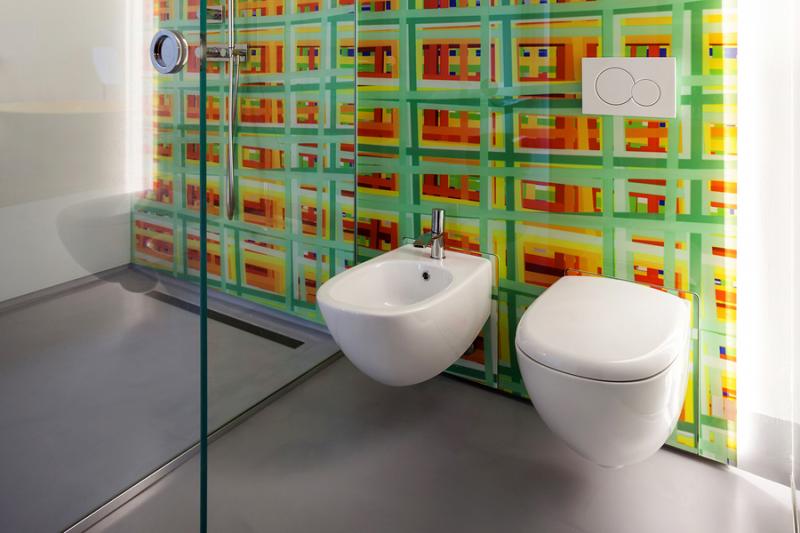A source of laughs or a force for hygienic good? John Bensalhia gets to the bottom of the bidet...
Mention the word bidet, and there's just a ghost of a chance that it may be greeted with a stifled laugh. The British especially tend to find it hard keeping a straight face when discussing a device that's generally used for cleaning the – ahem – downstairs – parts of the body. Indeed, there's even a character called Bidet in the 1966 film, Carry On Don't Lose Your Head, part of a film series that's widely known for its relentless innuendo.
In Italy though, the bidet is not so much of a laughing matter. Indeed, the bidet is in fact, a regular fixture in Italian buildings, whether it's in hotels or in households. 95% of Italian households are said to contain a bidet.
So for bidet beginners, here is a bluffer's guide as to what it is, where it came from, and what its benefits are. Are you sitting comfortably? Good – then I'll begin.
Background
The bidet does not actually originate from Italy, but from France. The word itself is said to mean either “pony” or old French for the verb to trot. This is because the bidet user is said to look like someone riding a pony. The bidet is said to have been devised in the late 17th century, although curiously, there is no definitive inventive genius to have stepped forward and claimed ownership. Rumours have persisted over two possible candidates – Marc Andre Jacond or Christophe Des Rosiers, who was the French Royal Family's furniture maker. Just as intriguingly, there is no set date as to when the bidet was introduced to the big wide world. In actual fact, the earliest reference to the bidet was in Italy, in 1710. Later that century, the Bidet a Seringue was referenced in 1750. This bidet was hand-fed by a reservoir pump, and would spray water upwards, although it was used in the bedroom rather than the bathroom.
Appearance
Resembles a smaller, squatter sink, usually about 15 inches high.

What is it used for?
 Well, it can be used for just about anything you want it to – even if you want to give the cat a quick bath (although it's not advisable). It can be used to shave legs and wash feet, but the general consensus is that it is mainly used for washing and cleaning genitalia and the bottom. In a way, it falls between two stools: It's a much cleaner method of cleaning up after going to the toilet than just using toilet paper – but for those who do not want to have to bother with a full blown shower or bath, the bidet is a much quicker and more convenient alternative.
Well, it can be used for just about anything you want it to – even if you want to give the cat a quick bath (although it's not advisable). It can be used to shave legs and wash feet, but the general consensus is that it is mainly used for washing and cleaning genitalia and the bottom. In a way, it falls between two stools: It's a much cleaner method of cleaning up after going to the toilet than just using toilet paper – but for those who do not want to have to bother with a full blown shower or bath, the bidet is a much quicker and more convenient alternative.
How does it work?
The bidet is generally the same as a standard sink in that it comprises a hot and cold switch on the left and right. These flank the middle movable tap nozzle that controls the water pressure, as well as the direction and angle of the water. There are also some bidets that have a jet of water coming through from the bottom of the basin, spraying upwards (although these are not quite as common in Italy). There are even special cleansers to be used when washing on a bidet – for example, Detergente Intimo (Intimate Cleanser). In particular, the Chilly brand of Detergente Intimo is a popular choice in Italy.

Bidet Benefits
Despite all the laughs to be had with the bidet, there are a number of benefits for this invention:
* It's a good way of maintaining personal hygiene and a far better guarantee than using just toilet paper.
* It’s a comfortable way to have a footbath without having to fill a basin and splash water around the house.
* The bidet is particularly good for those who suffer from 'downstairs' problems such as rashes or urinary tract infections.
 * The bidet is also helpful for elderly or disabled people.
* The bidet is also helpful for elderly or disabled people.
* It's a godsend on hot days, when certain parts of the body may get sweaty...
* And if none of these options convince you, then you could just use it to cool some beers or plant some parsley in it!
And after all, 95% of Italian households regard the bidet as a necessary part of the furniture. So come on people, Viva The Bidet!













